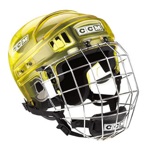
Target Group

Training Focus

EFS Performance Solutions

The EFS Matrix of Scientific Training (Primary Skills for Hockey):
In pursuit of maximizing athletic ability, there are almost an infinite number of possible sports training and fitness areas to work on. In addition to this complication, there is not an infinite amount of time to train these numerous areas, and recovery is essential to improvement. For younger athletes, proper stimulation with adequate nutrition and rest will create a thriving state. For older athletes, after targeted breakdown (proper stimulation), sound nutrition, and then rest, the goal should be to attain a naturally anabolic (or building) state. Because of the mature endocrine system of Prep and Elite athletes, an anabolic state is attainable when pursued in a prudent manner. In summary, focusing on the most essential areas is crucial to maximizing training effectiveness and sports performance. In the diagram below we have identified a key list of primary skills and scientific training components based on their level of importance to the sport of hockey.

Select a Sport
The EFS Training System and EFS performance solutions have helped hockey players and hockey teams surpass their perceived limitations. To aid in your understanding and the quest for maximum sports performance, we have provided a brief analysis of the challenges, solutions and windows of opportunity for hockey players of all levels.
Challenges: When Youth level hockey players get their first exposure to the game their nervous system is still fresh, untrained and lacking coordination. Due to this neural limitation, it can be quite challenging and even frustrating (for the player, parent and coach) learning and performing the fundamental hockey skills of balancing on the ice, skating and hitting the puck. Early on, players often try out their skills with roller hockey in a recreational or semi-competitive manner, (in elementary or middle school), as players start approaching 12 and 13 many begin a more competitive form of hockey at club organizations. Before you know it, they are then looking at high schools, as well as traveling and competing in tournaments.
When reaching the Prep level (high school years) hockey players often travel long distances for many of their games and tournaments to square up with high end competition. Meanwhile they also starting to ponder the prospect of playing college hockey as well. Hockey skills and movement on the ice are becoming much more proficient at the Prep level (high school years). This is also a time when definitive weaknesses become evident, particularly in areas such as power and explosiveness, balance, reaction, quickness, strength and injury susceptibility.
Elite level hockey players are playing in college, and in some cases competing at the national or international level. Their sharpened hockey skills have emerged from many years of exhaustive practice on the ice. These players are limited by the finite number of hours to practice and train each day, and the risk of over training (from too much time on the ice). Unfortunately, many also forget that they won't be as affective, or as noticed if they are lacking reaction, quickness hip power and explosiveness. To maximize gains and avoid the pitfalls of wasteful experimentation and catabolism (excessive breakdown), at this level one must spend their practice and training time wisely.
Window of Opportunity: The good news is that the nervous system is very impressionable, presenting a window of opportunity that should not be missed (particularly for youth and prep level athletes). The EFS System drills and exercises lay a foundation of greater neural connectivity which (if reinforced enough) will impact them for the rest of their lives. While chasing and reacting to a puck on the ice at the youth level is often a challenge, EFS's neural training helps make learning and eventually mastering hockey skills easier. High coordination and high speed movements are more easily assimilated for athletes who use the EFS System and Performance solutions. For hockey players at all levels, the outcome is enhanced neuro-muscular synchronization, greater limb control and ultimately confidence.
We have created The EFS System and performance solutions to also address prep and elite level challenges by target strengthening and often correcting these weak links in a wise and prudent manner. The difference is preparation vs. procrastination and saves vs. misses, fast reaction and minimal errors vs. delayed reaction and multiple errors, confidence vs. discouragement. An over-emphasis of ice time and skill building will cause one to miss this window of opportunity, which can even be the downfall of those who neglect building a solid foundation off the ice: speed, quickness, strength and power.
At the Elite hockey level, the slightest edge in quickness, hip power, kinesthetic sense, reaction or strength can yield an overwhelming victory for those who seek and attain this advantage wisely. The Proven EFS System and performance solutions are so effective and reliable at gaining this edge, that it can be the difference between starting and sitting the bench, consistency and inconsistency, winning and losing, and ultimately success and failure for elite level hockey players.
Hockey players who use the The EFS System or EFS performance solutions, improve in testing and practical application.Because the EFS system is proven effective they score higher in quickness & agility, speed and jump testing. There is no wasteful experimentation, guessing game, or trial and error. The time saved from training more efficiently with The EFS System, allows hockey players to spend more time practicing their applied skills on the ice. Their applied skills are now working from a more solid foundation of primary skills (As illustrated in the The EFS Peak Performance Pyramid), which yields much greater playing potential.
© 2010 Extreme Fitness and Sports, Inc. All rights reserved

Where we are
EFS Training Facility
1077 Dell Ave
Campbell, CA 95008
Map
Contact US


EFS Peak Performance Pyramid
Applied hockey skills cannot be fully maximized unless they are built on a solid foundation of primary skills that are rooted in exercise physiology and sports science. Like a pyramid, the wider and more solid the foundation, the higher the peak can be. See immediately below (The EFS Peak Performance Pyramid) for a visualization of this principle.
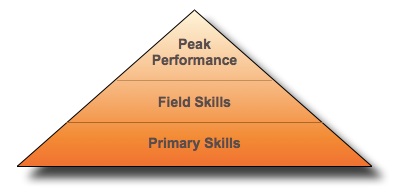
The EFS Speed, Quickness, Agility & Jump Training System
Average participants using this EFS System improve foot quickness and agility scores by 20-40%, reduce 40yd and other speed times by 2-5 tenths, and increase vertical jump score by 2-5". Athletes using this EFS system usually participate in small groups, private lessons or team training programs.
Applied Benefits
Hockey players who prepare with the EFS Speed, Quickness and Jump System are better able to react to a puck while skating on the ice. They enhance their ability to accelerate and decelerate, deliver faster hits and move quickly throughout the rink. The result is fewer errors, and more saves, more successes and greater confidence. The countless "almosts" become "I cans". Performance levels surge and confidence levels flourish.
Expected Results
The EFS Sports Strength Program
Participants using EFS strength programs have been known to improve strength by 20-30% for the Beginners program and 40-50% for the Advanced EFS program. Athletes using EFS strength programs usually participate in private lessons, self paced (after an initial setup) or team training programs.
EFS AST (Applied Sports Training)
Here we target lateral hip power, balance, reaction, quickness & speed as well as strength. Testing as well as applied outcomes (or field performances) are the primary success indicators for EFS AST. Athletes using this EFS Applied Sports Training usually participate in private lessons, paired training or team training programs.
Phone: (408) 370-9980
Email: info@xfitsports.com









Hockey:
ice hockey
a fast contact sport played on an ice rink between two teams of six skaters, who attempt to drive a small rubber disk (the puck) into the opposing goal with hooked or angled sticks. It developed in Canada in the 19th century.
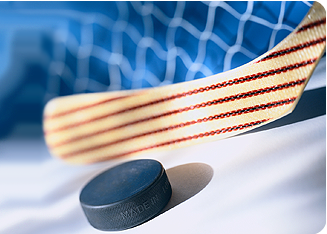

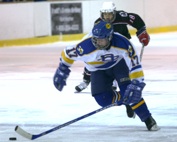
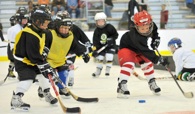
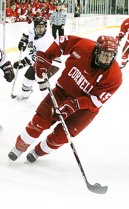












Patent and Trademark Pending. EFS INC. All Rights Reserved.
Highlighted means more focus

Patent and Trademark Pending. EFS INC. All Rights Reserved.
